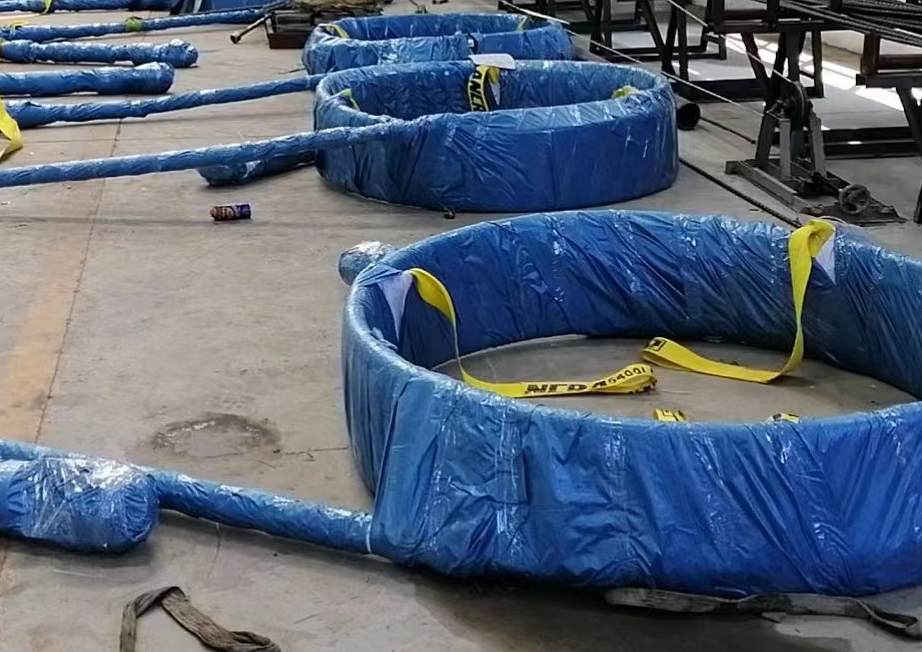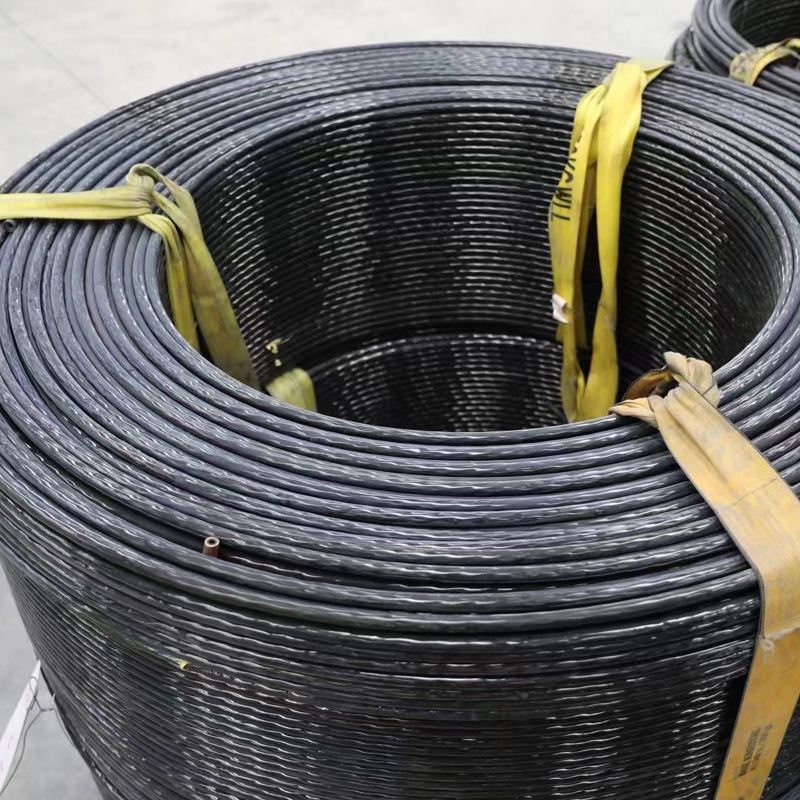What is extracorporeal cord?
Time:
2023-04-25
Extracorporeal cables are one of the important branches of post tensioning systems. The external cable concrete structure has the advantages of simple arrangement of prestressed tendons and sleeves, convenient adjustment, simplified post tensioning operation procedure, and greatly shortened construction time. At the same time, due to the pre-stressed steel bars arranged on the outer side of the web, it is easy to pour concrete. Due to the position of the prestressed reinforcement, friction losses during the construction process are reduced, facilitating the replacement of the prestressed reinforcement. However, there is relatively little research on this aspect in China, and there is relatively little research on the mechanical properties of external tendons. Therefore, it is necessary to study this structural form in order to make the external cable reinforcement more widely used.
The fundamental difference between the external prestressed structure and the internal prestressed structure is that the prestressed reinforcement is located outside the concrete structure and can only be connected to the structural join at the anchor block and guide block. Therefore, the stress of the external cable is determined by the overall deformation of the structure. In bonded prestressed structures, the force bar is located inside the concrete structure and the structure is completely bonded, coordinating with structural deformation at any cross-section. Therefore, the stress of the force bar is closely related to the concrete cross-section. Traditionally, internal prestressing tendons are not considered as individual components. The external steel bars, on the outside of the concrete, naturally become a separate component relative to the entire structure, and are more important than the internal steel bars. Therefore, in the design of external cable structures under dynamic loads, it is necessary to consider that the external cable reinforcement and the structure are independent of vibration, and resonance should be prevented. When the external cable reinforcement (such as vehicles) resonates under dynamic loads, it is easy to cause anchor fatigue damage in prestressed concrete and bending fatigue damage of steering components. In order to improve the seismic performance of external cable structures, corresponding measures should be taken.
The principle of external cable reinforcement is to use high-strength steel wires, steel strands, or high-strength coarse steel bars as load-bearing tools to apply external cables to the beam body, and use the reverse bending moment of prestress to offset the internal force generated by some external loads, thereby improving the performance of the bridge and improving the structural bearing capacity. At present, external cable reinforcement is one of the common reinforcement methods in highway bridge reconstruction, especially suitable for the reinforcement of long-span prestressed concrete continuous box girder and continuous t-frame box girder bridge.
The advantages of external cable reinforcement are as follows:
1. It can balance and remove some dead loads.
2. It can fully utilize the advantages of reinforcement materials and greatly improve the load-bearing capacity and structural stiffness of the structure.
3. The external cable has a small variation range and no fatigue issues, making it convenient to replace the external steel bars.
4. It can effectively control the cracks and deflection of the original structure, effectively close the cracks, greatly reduce the deflection, and significantly improve the crack resistance performance of the original beam, thereby improving the durability of the structure.
5. Can control and adjust external cable stress.
6. It can be carried out without interrupting traffic, with minimal impact on the operation of the bridge.
7. The required equipment is simple, the construction period is short, and the economic benefits are significant.
keyword:





